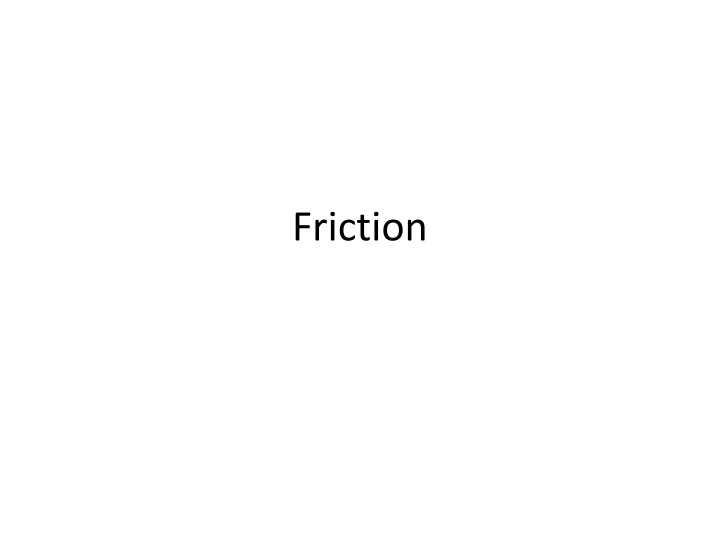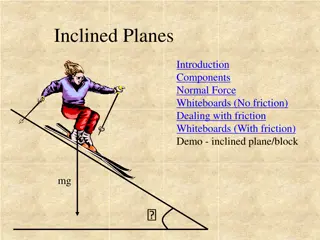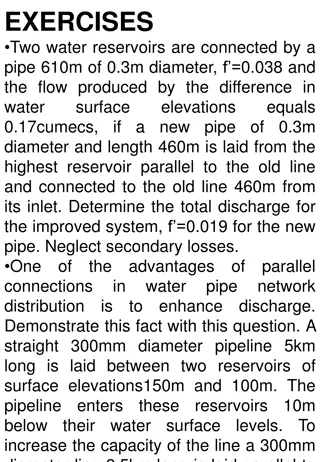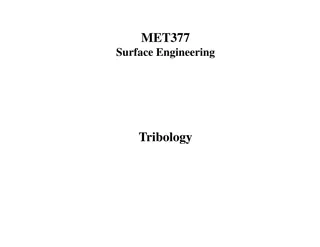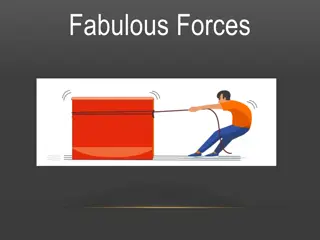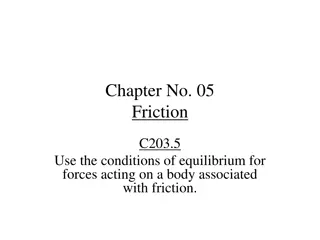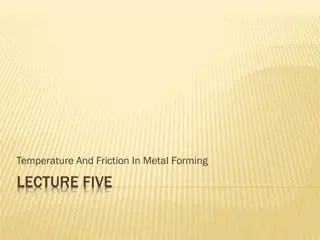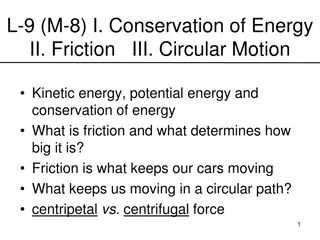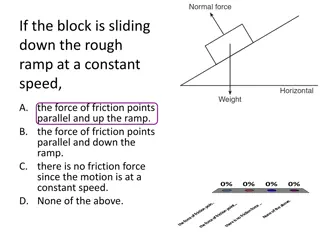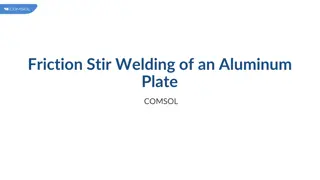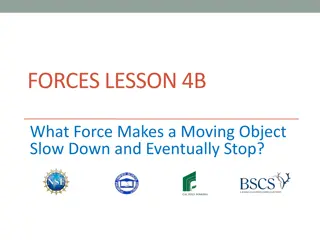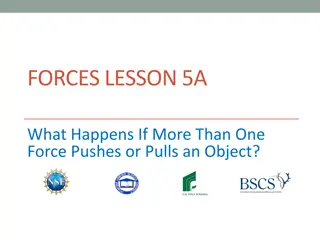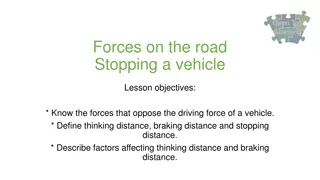Friction
Discover the various factors influencing friction, including surface texture, material, area, speed, mass, weight, angle, and normal force. Explore the mathematical relationships between friction force and normal force, as well as kinetic friction and normal force. See how applied forces affect sliding objects in different scenarios. Dive into demonstrations and discussions on friction's continued impact.
Download Presentation

Please find below an Image/Link to download the presentation.
The content on the website is provided AS IS for your information and personal use only. It may not be sold, licensed, or shared on other websites without obtaining consent from the author.If you encounter any issues during the download, it is possible that the publisher has removed the file from their server.
You are allowed to download the files provided on this website for personal or commercial use, subject to the condition that they are used lawfully. All files are the property of their respective owners.
The content on the website is provided AS IS for your information and personal use only. It may not be sold, licensed, or shared on other websites without obtaining consent from the author.
E N D
Presentation Transcript
What factors affect (the size of) friction? Survey says: Surface texture Surface material Surface area Speed of slide Mass Weight Angle of surface Normal Force
What is the mathematical relationship between .. friction force (N) and normal force (N) for an object that is slid at a constant speed across a level surface?
Kinetic friction vs Normal Force What is the mathematical relationship between kinetic friction force (N) and normal force (N) for an object sliding across a level surface? Consider this: What is the normal force acting on a hovering hovercraft? How much kinetic friction does the floor exert on the hovercraft as it glides across the floor?
Friction, Continued Demo Reading Discussion
What is happening here? From 0-2s NOTHING Just after 2.0s, a force is applied. From 2 7 seconds the applied force gets larger (but the object did not slide). During this interval, the applied force At about 7.0s, the applied force has and the size of the applied force drops from about 2N to just over 1N. From 7-10s the applied force remains essentially constant while the object was sliding at a constant speed. During this interval, the applied force
What factors affect (the size of) friction? Survey says: Surface texture Surface material Surface area Speed of slide Mass Weight Angle of surface Normal Force
What really affects the friction force: Is the object sliding or not Surface type and texture Normal force
What is the mathematical relationships between .the (horizontal) force (N) needed to just get an object sliding, and the normal force (N) acting on an object resting on a level surface?
What must you do to get an object to start sliding?
What must you do to get an object to start sliding? Overcome the maximum static friction. This means, there must be a force (or a component of a force) opposite the friction force that is larger in size than the biggest the static friction force can get.
Which FBD applies if the crate is stationary?
Which FBD applies if the crate is beginning to slide?
What must you do to keep an object sliding at a constant velocity?
Which FBD applies if the crate is sliding at a constant velocity?
What must you do to keep an object sliding? To keep an object sliding at a constant velocity on a level surface, an applied (horizontal) force must be exactly the same size as the kinetic friction force.
Friction vs (Optional) 1st: What is the mathematical relationship between the friction force (N) and the normal force(N) on an object that is sliding across a level aluminum surface at a constant speed. Consider this: What is the normal force acting on a hovering hovercraft? How much friction does the floor exert on the hovercraft as it glides across the floor? 2nd: What is the between the friction force (N) and the normal force(N) on an object that is sliding across a level rough surface at a constant speed. 3rd: What is the between the friction force(N) and the surface area(cm2) between an object and the surface across which the object is sliding (at a constant speed).
Key concepts of Friction Static friction NOT sliding friction Kinetic friction sliding friction The direction is always parallel to the surface interface, and in the opposite direction of the slide or the potential slide. Friction can slow something down, or speed something up Used to get around, keep knots tied, warm hands
Friction vs Normal force Kinetic friction acts when an object is SLIDING Ffk= kFn Kinetic friction is directly proportional to normal force. If you double the normal force, the kinetic friction force is doubled. Static friction acts when an object is not sliding, but something is trying to make it slide. Ffs< sFn The maximum static friction is directly proportional to normal force. If you double the normal force, the maximum static friction force is doubled. However, the actual static friction force can be less than the maximum possible static friction force. k< s
Other Factors There exists no clear relationship between friction force and SURFACE AREA As the surface is tilted more and more, the friction force lessens BECAUSE THE NORMAL FORCE APPROACHES ZERO AS THE INCLINE ANGLE APPROACHES 90 DEGREES Different surfaces all have different coefficients of friction (ex: Wood on sand paper> wood on rubber> wood on carpet)
Example Problem A 100 kg crate rests on a level surface where the coefficients of static and kinetic friction are 0.6 and 0.4 respectively. How much force must be applied horizontally to: A) get the crate to start sliding? B) keep the crate sliding at a constant velocity?
Example (continued) C) a horizontal force of 700 N is applied to the right. Compute the acceleration. D ) it has been accelerated until it is going 5.0m/s to the right. Then the applied force is removed. How far will it slide before stopping?
Sliding into second base During a ball game, a player running at 8.00 m/s attempts to slide onto second base. The coefficient of kinetic friction is 0.500. How far from the base can the slide start if the player comes to a stop AS he reaches the base?
While the man pulls with 30 N on the rope, the 5 kg sled with the 10 kg child moves at a constant velocity. The rope makes an angle of 30 above horizontal. What is the coefficient of kinetic friction?
